How To Read A Champagne Label
4th August 2022
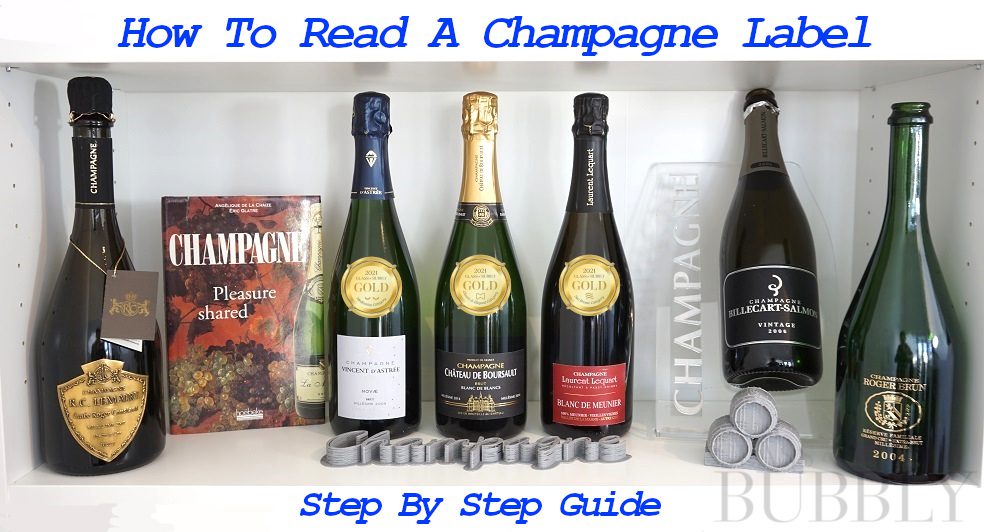
This is a Step by Step Guide on how to easily examine and understand the wording on a Champagne Label, so when you’re next in your local supermarket or looking online you’ll be able to recognize the lesser-known facts that a Champagne Label is trying to tell you.
Step 1 – Selecting a Bottle
Every bottle of Champagne will have a label, not all will have the same information, some information is required by law and others are down to the winery, so let’s pick 3 different bottles and find out what their labels have to say, I’ll break down 2 of the labels in pictures for you and then leave the third label for you test your knowledge at the end.
I’ve chosen a bottle of Champagne Château De Boursault, Champagne Laurent Lequart and Champagne Vincent D’Astrée to look at their labels, both front and back.
Some of the time, the front label will be enough, but for those times when it doesn’t provide you with adequate information, we’ll also check out the back label to see how that might be presented.
Step 2 – Reading The Front Label
I’ve crafted these images to help make the labels easier to understand, when figuring out where to start, it’s easiest to go from top to bottom.
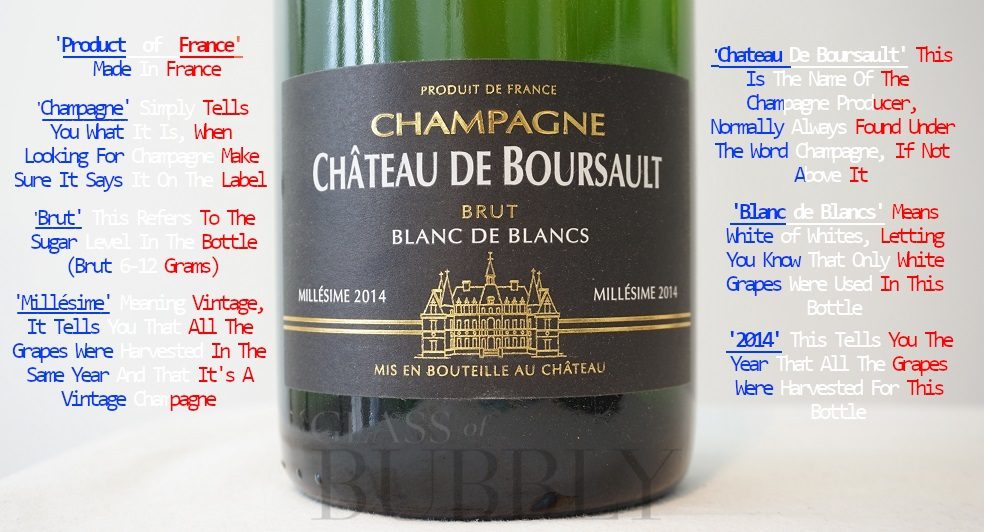
Product of France – You’ll sometimes see this on a label, it’s not necessary as most will already know Champagne comes from France, although it might be more helpful in America, as they have Californian Champagne, its 100% legal, but doesn’t mean French Champagne has to be happy about it. For us Brits, this part of the label is not important to take note of.
Champagne – Any bottle of Champagne will have Champagne written on the label somewhere, its one of the biggest selling points, so hiding it away somewhere small doesn’t make sense, it either appears above the winery name or below it, you can also normally see it around the neck of the bottle. You’re more likely to see Champagne written under the winery name on bigger Champagne brands.
Winery Name – In this case, Chateau De Boursault, tell you who produced this Champagne, wineries can gain cult followings of people who love their style of Champagne, so showcasing their name as big, if not bigger than ‘Champagne’ helps both promote them and lets people know different producers make different Champagnes.
Brut – This refers to the Sugar Level inside the bottle, Brut means that between 6-12 grams of Sugar will have been added to the Champagne, they do this to help create the flavours, aromas, style and mouthfeel.
Blanc de Blancs – In English translates to ‘White of Whites’, normally indicating that Chardonnay was the only Grape variety used, it’s not pronounced how it is spelled, you’d say it like this ‘Blunc de Blunc’, you don’t say the A and the S is only for show.
Millésime 2014 – I would separate Millésime and 2014 into sections, but they widely mean the same thing, Millésime means Vintage in English and 2014 is the date, so it’s Vintage 2014, you won’t always see Millésime on a bottle, but if you say a date proudly displayed on the front of the bottle or at very least prominent on the back of the bottle, then you have a Vintage Champagne, which means all the grapes were harvested in that specific year, grape for further again and supposed to be of higher quality.
Mis en Bouteille au Château – I didn’t have enough space left on the picture for this one, but it means that this Champagne was bottled at the Château or if you put it into Google Translate ‘bottled at the castle’, the Château they talk about is the one pictured, a magnificent Château which served as a makeshift hospital during World War 2.
Step 3 – Reading The Back Label
The back label says a lot of what was on the front label, like, Champagne, Winery Name, Year and Grape, the added information is as follows.
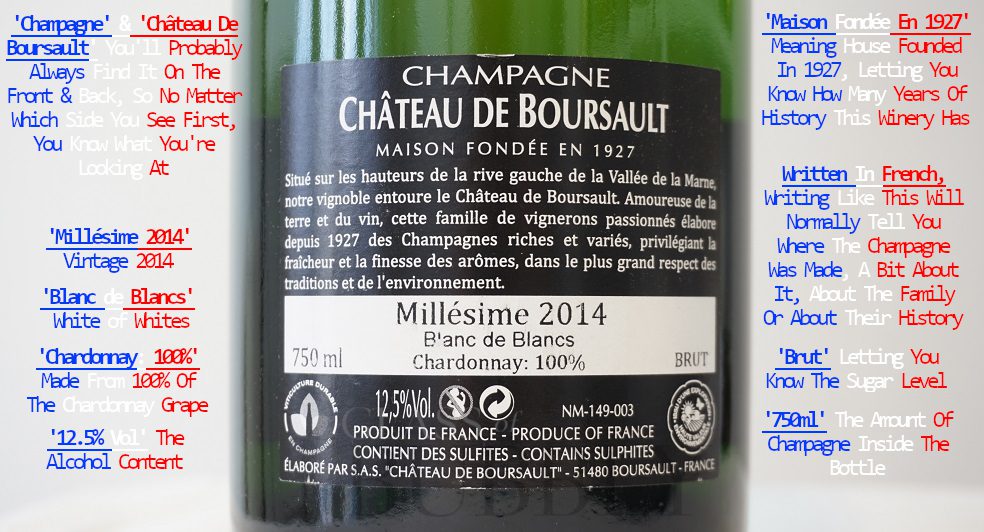
Chardonnay 100% – We knew this bottle was a Blanc de Blancs, translating to White of Whites, but now we know that the only grape variety used in this Champagne was Chardonnay.
Alcohol Level – On this bottle, it is 12.5%, you’ll normally see 12% on a Champagne bottle, but it’s not uncommon to see 12.5%.
Maison Fondée En 1927 – This Translates to ‘House Founded In 1927’, letting you know how many years of history this winery has.
Written In French – The Translation of that is this – ‘Located on the heights of the left bank of the Marne Valley, our vineyard surrounds the Chateau de Boursault. In love with the land and the wine, this family of passionate winegrowers has been producing rich and varied Champagnes since 1927, favoring the freshness and finesse of the aromas, with the greatest respect for traditions and the environment.’ Letting you know where the grapes were grown, that the family is passionate about winemaking and more.
750ml – This and the size of the bottle tell you that it is a Standard Size bottle of Champagne.
Let’s Try Another Champagne Label
Not all Champagne Labels are the same, with them being produced by different wineries, in different locations with different grapes and sugar levels, it’s worth doing another one to make sure we’ve got it.

Champagne – Tell you it’s Champagne.
Laurent Lequart – This Champagne has been produced by Champagne Laurent Lequart.
Récoltant à Passy-Grigny – This is the Village where the Champagne Grapes were grown to produce this bottle of Champagne.
Blanc de Meunier – A slightly different one from ‘White of Whites’ or ‘White of Blacks’, the Blanc de Meunier means ‘White juice from the black grape of Meunier‘.
100% Meunier – Only the Pinot Meunier Grape was used in this bottle of Champagne.
Vieilles Vignes – Translates to ‘Old Vine’ this is not necessary on a label, but it does let you know that the vine has had years (in this case 45) of aging, which is supposed to produce a finer quality of Grape, that then makes a finer Champagne.
Vallée de la Marne – This is the region in the Champagne region where this Champagne was produced.
Autre Cru – This tells the quality level of Champagne. 1 – Grand Cru: 2 – Premier Cru: 3 – Autre Cru
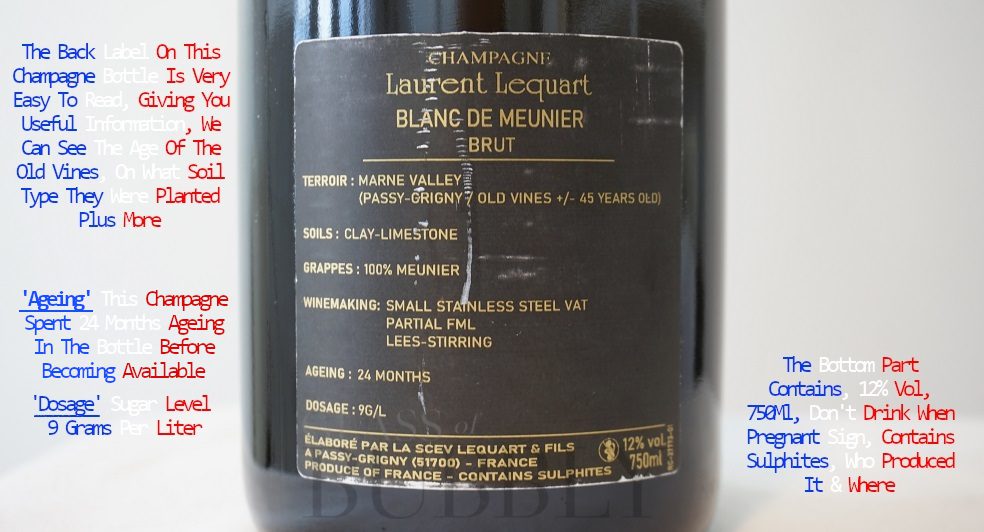
Ageing – 18 Months is the minimum amount of time to age a Champagne, this bottle spent 24 Months ageing , 6 months longer, they can choose to do this to evolve the flavours and aromas.
Dosage – The amount of sugar in this bottle has an exact amount, normally you just get Brut, meaning that the sugar level is between 6 and 12 grams, this Champagne gives you an exact amount of 9 grams.
Now You Try Reading The Final Label
Try to figure out what this Champagne Label is telling you, look back to the previous examples if you need a refresher.
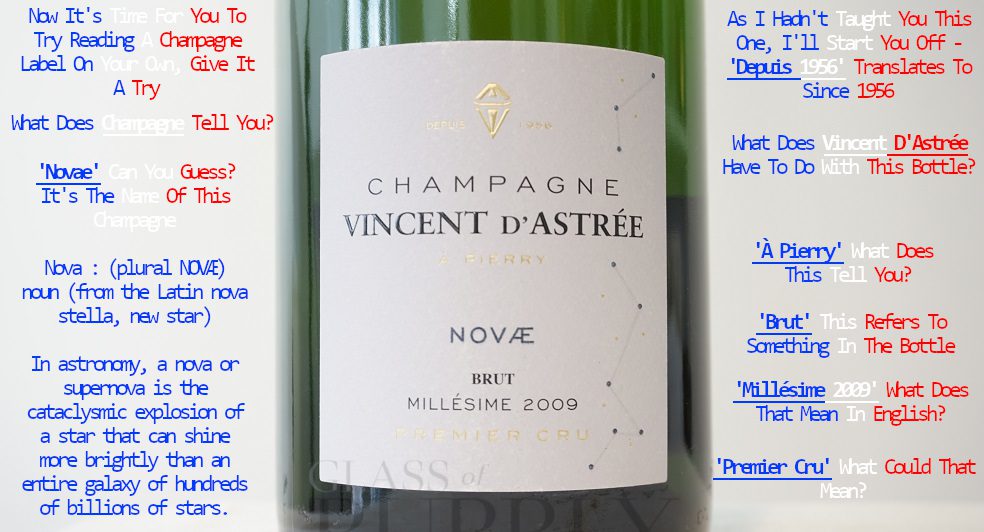
And for the back Label, I’ve thrown in a curveball by picking a bottle with a blemished back label, some labels on very old bottles can deteriorate over time depending on storage conditions, making them harder to read, this one isn’t very bad, just enough to make you look a little closer.
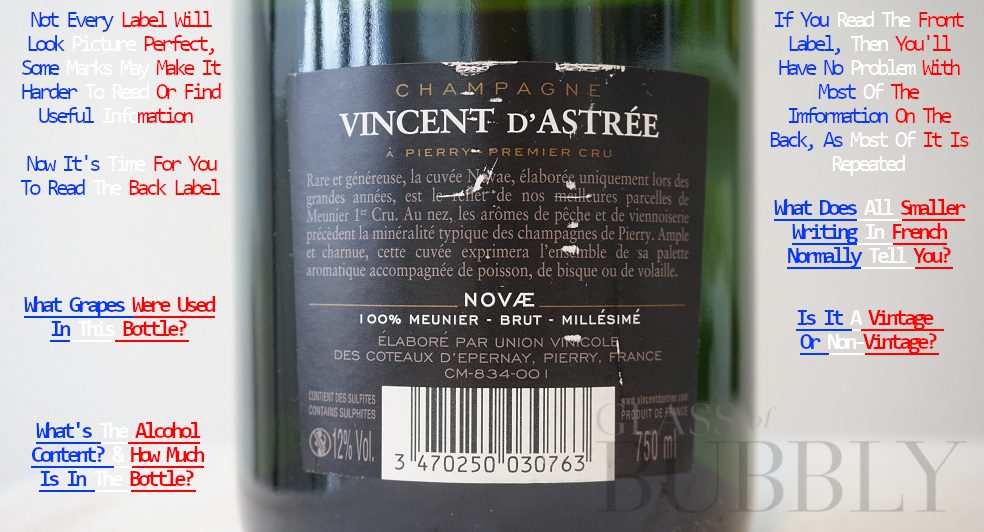
There you have it, hopefully, you’ve learned a little more about what’s on a Champagne Label and can pick up a bottle of Champagne and understand exactly what it is trying to tell you.
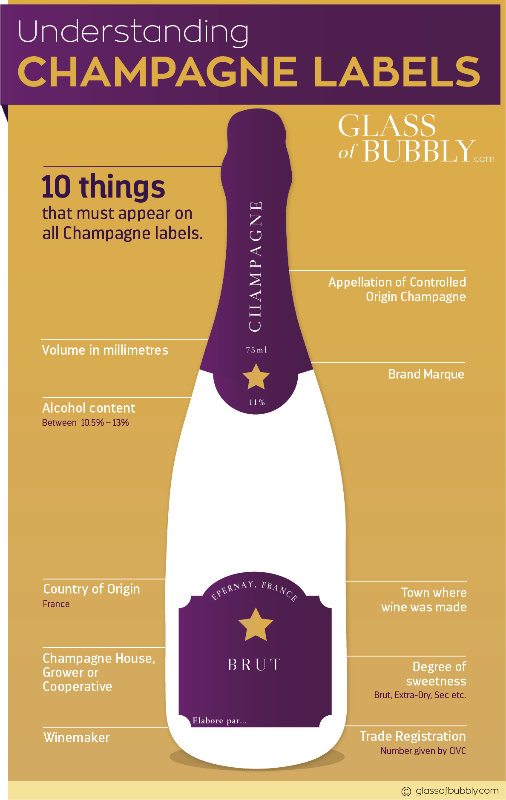
![]()
Oliver Walkey
Champagne and Sparkling Wine Writer, Focused on Bringing the Exciting and Fascinating World of Bubbly to You.
